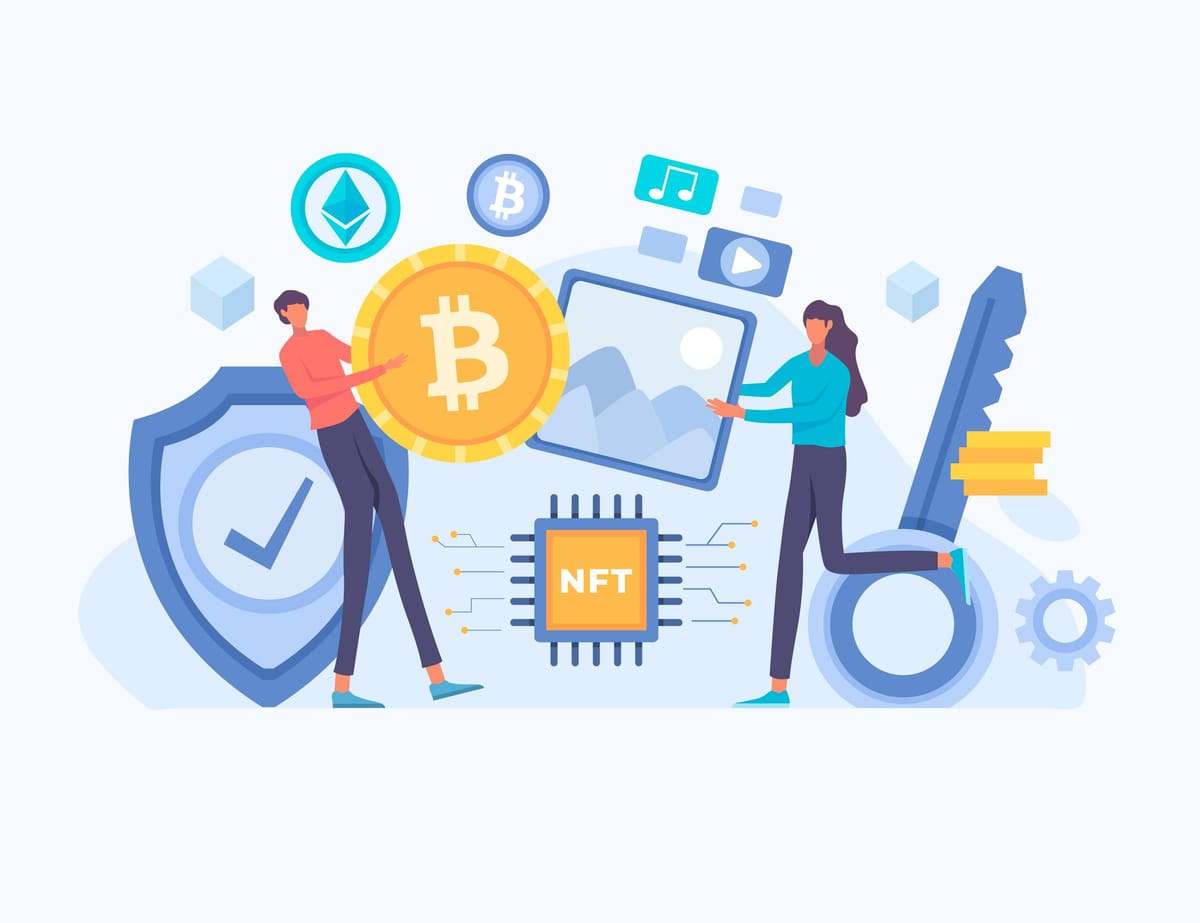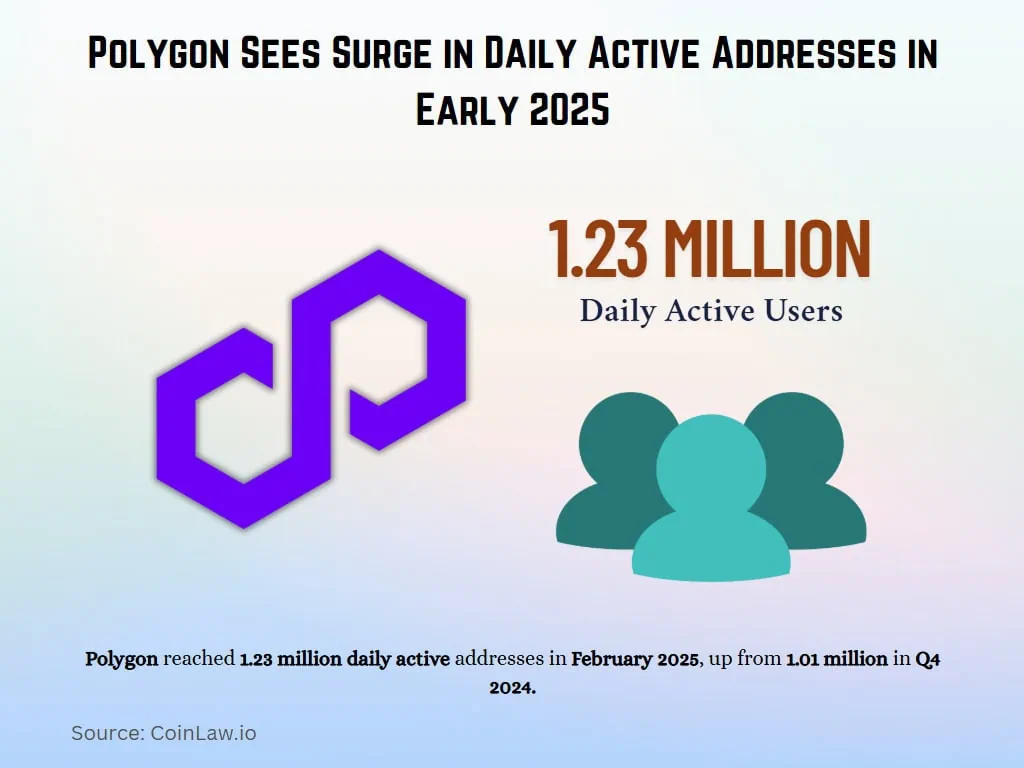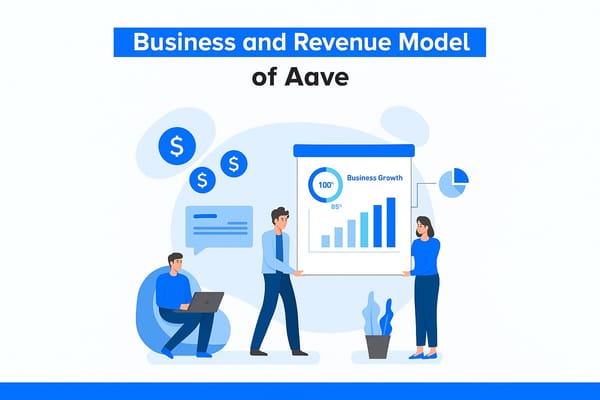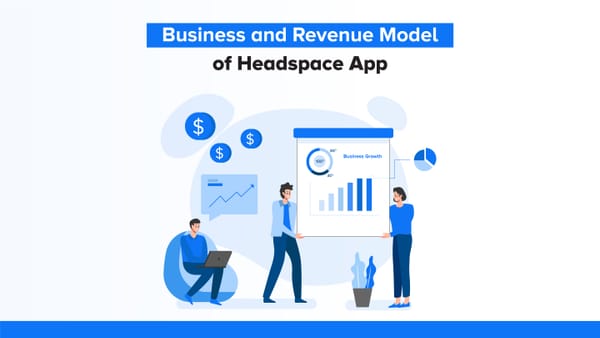Top 10 Platforms to Build Decentralised Apps (dApps) in 2025

Before diving into decentralised applications, one number really caught my attention, and it’s impossible to ignore, which was that it turns out 97% of companies reported that they either had experienced an AI-related breach or lacked proper AI access controls. Wild, right? AI is arguably one of the most valuable assets a company holds; yet the challenges it brings are multifold. Even more surprising: 63% of organisations have inadequate AI governance policies.
Feels like playing with a double-edged sword. On one side, AI is helping companies innovate and grow; on the other, it’s creating new vulnerabilities. But the good news? The defenders are stepping up. IBM reports that, for the first time in five years, the average cost of a data breach has dropped to $4.44 million, though companies still spend around $4.92 million dealing with breaches. It’s a high-stakes race between offence and defence, and the stakes are higher than ever.
That’s where Decentralised Applications, or DApps, come into play. Unlike regular apps that depend on a single company’s servers, DApps run on networks where no single party is in control.
Thanks to blockchain and smart contracts, people using these apps have more control over their information and how they interact with the platform. And these apps are quietly becoming a part of everyday life as more people are accessing everything through their phones. From managing money to trading digital art and even playing games, all in ways that put control back in the hands of users.
Key Takeaways
- The worldwide dApps market was worth about $30.6 billion in 2023.
- It is expected to grow significantly, reaching around 145.3 billion by 2033.
- According to DappRadar’s 2024 report, unique active wallets grew by 485% last year.
- AI dApps really stood out last year, with activity shooting up more than 22.69%.
- Hacks and exploits cost the dApp industry $1.3 billion in 2024.
- North America holds 40% of the market, leading in decentralised storage adoption.
- The top 100 DeFi tokens together are worth nearly $98.4 billion as of Q2 2025.
Key Growth Drivers Behind the Rise of dApps
The decentralised applications market is expanding quickly, and a few big factors are fueling this momentum:
Broader Blockchain Adoption – As interoperability improves and institutions begin to embrace blockchain apps, the foundation for dApps continues to strengthen.
Decentralised Identity & Web Solutions – Growing interest in secure, user-controlled digital identities and Web3 tools is pushing more people toward dApps.
More Blockchain Platforms – With new platforms entering the scene, developers have more choices, leading to a surge in diverse applications.
Demand for Decentralised Social Media – Users are increasingly drawn to platforms that give them more control, privacy, and freedom, driving adoption of decentralised social networks.
History of DApps (Decentralised Applications)
2009 — Bitcoin’s launch
Bitcoin introduced the first decentralised blockchain network, proving that peer-to-peer transactions could exist without banks or intermediaries. However, its scope was limited to digital currency.
2013 — Ethereum was proposed
Vitalik Buterin introduced the idea of a programmable blockchain through the Ethereum white paper. Unlike Bitcoin, Ethereum aimed to run decentralised applications through smart contracts.
2014 — Ethereum ICO
To fund development, Ethereum held an initial coin offering (ICO), raising over $18 million. This successful sale positioned Ethereum as a serious project in the emerging blockchain industry.
2014 — The DApp framework was defined
A white paper titled The General Theory of Decentralised Applications by David Johnston and Shawn Wilkinson established the criteria for a DApp:
1) Implement a consensus mechanism, such as Proof of Work or Proof of Stake.
2) Use cryptographic tokens for access and rewards.
3) Store data on a public blockchain.
4) Must be open-source and decentralised.
5) It also classified DApps into Layer 1, Layer 2, and Layer 3 based on their structure.
2015 — Ethereum launch (Frontier)
The first public version of Ethereum, called Frontier, was released in July 2015, nearly two years after the publication of its whitepaper. This marked the official birth of the Ethereum blockchain ecosystem, designed to host decentralised applications of all kinds.
2017–2018 — ICO boom
The rise of DApps coincided with the ICO (Initial Coin Offering) craze. During this period, an average of 285 new projects were launched each month, most of which were tied to platforms or DApp tokens. While the top 11 projects returned over 1,000% to investors, the median loss across ICOs was 87%.
Top 10 Blockchain Platforms to Build Your dApp in 2025
Deciding where to build your decentralised app can be overwhelming with so many blockchain options. Here’s a list of the top 10 platforms that make launching your dApp in 2025 easier and faster
Ethereum
Ethereum is a widely used blockchain that enables developers to create smart contracts and decentralised applications (dApps) for various projects. With Ethereum 2.0, the network is faster, more scalable, and uses much less energy. Moving from Proof-of-Work (PoW) to Proof-of-Stake (PoS) makes it safer and greener.The upgrade also includes sharding, which divides the network to handle more transactions simultaneously. This means apps run smoother, even when traffic is high.
Best use cases: DeFi, NFTs, gaming, DAO platforms, and large-scale applications.
Challenges: Fees can still be high, and network upgrades are complex.
Strengths: Secure, energy-efficient, scalable, strong developer support
Binance Smart Chain
Binance Smart Chain (BSC) is a high-performance blockchain designed to make faster and cheaper decentralised applications (dApps) and smart contracts. At its core is the Proof-of-Staked Authority (PoSA) consensus, which enables the network to process transactions quickly while keeping fees low, making it a perfect combination that appeals to both developers and users.
What makes BSC stand out is its Ethereum compatibility. Developers can move their apps from Ethereum or build new ones without starting from scratch, since the tools are already familiar. Add Binance’s backing and an active global community, and you get a network that has grown into a hub for DeFi projects, NFT platforms, and blockchain games.
Best use cases: Cost-effective DeFi apps, NFT platforms and projects shifting from Ethereum.
Challenges: Centralisation concerns, evolving security, and regulatory risks.
Strengths: Low fees, fast transactions, Ethereum-friendly and expanding ecosystem.
Solana
Solana has earned attention for its ability to handle thousands of transactions per second at extremely low cost, setting it apart from slower and more expensive blockchains. Its innovative Proof of History (PoH) mechanism allows the network to process data in order and at scale, security and speed without overly compromising network decentralisation.
Developers love Solana because of its seamless user experiences and high-traffic dApps that run smoothly without slowing down.
Best use cases: Gaming, social apps and DeFi projects.
Challenges: Network outages, Centralisation and Competition.
Strength: Fast, Low Fees, Scalable and Developer-Friendly.
Polkadot
Polkadot is a modern blockchain network that connects multiple blockchains into one system. Instead of making every chain follow the same rules, it allows each chain to focus on its own purpose while still communicating safely with others. Plus, its sharded design lets transactions happen in parallel across chains, increasing speed and efficiency.
The network supports cross-chain communication, so data can move securely between chains. Developers can build custom blockchains for projects like DeFi, NFTs, or enterprise apps without being restricted by a one-size-fits-all model.
By combining different specialised chains, Polkadot enables decentralised marketplaces and services to run more efficiently and fairly. Features like scalability, upgradeability, transparent governance, and cross-chain compatibility make it a strong choice for projects that need flexibility and room to grow.
Best use cases: DeFi Platforms, Cross-chain Apps and Enterprise Solutions.
Strengths: Interoperable, Scalable, Flexible, and Upgradable.
Challenges: Complex setup, Validator dependence and Competing networks.
Avalanche
Avalanche is designed to tackle three major blockchain challenges: speed, cost, and scalability. Unlike older networks, which slow down with heavy traffic. Avalanche can process thousands of transactions per second and finalise them within seconds, all while keeping fees extremely low.
Launched by Ava Labs, the platform introduces an innovative consensus mechanism that combines elements of classical and Nakamoto consensus, making it both fast and secure. A standout feature is its support for custom subnets, independent blockchains that can be tailored for specific use cases. This gives developers the freedom to build specialised solutions for DeFi, NFTs, gaming, or enterprise-grade applications without being limited by one-size-fits-all rules.
For developers, Avalanche offers a flexible and scalable environment, while users benefit from quick, affordable, and energy-efficient transactions.
Best use cases: DeFi platforms, Smart contracts, Tokenised assets, and NFT marketplaces.
Strengths: Fast, low-cost transactions, Near-instant finality, Scalable infrastructure with thousands of TPS and Flexible subnets tailored to use cases.
Challenges: Competing with Solana, Polkadot, and Ethereum, the Ecosystem is still maturing, and there is Technical complexity for new developers.
TON
TON (The Open Network) is quickly becoming the backbone of Web3 inside Telegram. With Telegram choosing TON as the exclusive blockchain for its Mini Apps, developers now have a direct path to reach one of the world’s largest online communities. This means any app built on TON can instantly connect with Telegram’s massive user base.
One of the most user-friendly parts of TON is the native wallet already built into Telegram. Without extra downloads or complicated steps, people can send and store Toncoin, manage NFTs, or connect to dApps straight from their chat window. That level of simplicity is rare in crypto and makes TON stand out for everyday use.
Best use cases: Social media integration, Consumer-focused dApps, and Scalable payment systems.
Strengths: Telegram integration (wallet + onboarding), Fast, low-fee transactions and Developer tools tailored for Web3 apps.
Challenges: Regulatory uncertainties, an underdeveloped Ecosystem and the need for wider adoption beyond social apps.
Cardano
Cardano was founded in 2015 by Charles Hoskinson and Jeremy Wood to build a blockchain that is secure, scalable, and environmentally sustainable. Unlike earlier networks, Cardano is designed to be research-driven, with every upgrade tested through peer-reviewed academic principles, which make sure reliability and trust as the top priority.
The network uses the Ouroboros proof-of-stake system, which allows ADA holders to validate transactions and create new blocks without consuming excessive energy. This makes Cardano eco-friendly while maintaining strong security.
Its layered architecture separates transaction management from smart contracts, giving developers flexibility to build dApps without disrupting the network. ADA, the native cryptocurrency, powers transactions, staking, and supports the growth of applications on the platform.
Cardano is ideal for projects that require trust, security, and long-term sustainability, making it a favourite for enterprise solutions, governance platforms, and energy-efficient DeFi projects.
Best Use Cases: Enterprise dApps, Governance solutions and Energy-efficient DeFi platforms.
Strengths: Eco-friendly, Flexible, Research-backed and Trusted.
Challenges: Slow adoption, Limited tools and Governance delays.
Polygon
Polygon has become one of the go-to Layer‑2 solutions for Ethereum, praised for its speed, low transaction costs, and ability to support large-scale applications.By 2025, Polygon had become home to over 45,000 dApps, creating a lively space where games, DeFi platforms, and NFT projects all coexist. Games, in particular, are driving a lot of the action; they make up nearly 28% of all transactions. Popular titles like Sunflower Land, Planet IX, and Derby Stars alone brought in 3.1 million players during the first quarter.
You can really see its growth in the big numbers too: on February 16, 2025, Polygon processed 10.3 million transactions in a single day, and had 1.23 million daily active addresses, up from 1.01 million in late 2024.
Even Polygon has also caught the eye of big brands such as Nike, Starbucks, Adidas, and Disney, which have all launched NFT and loyalty initiatives on the platform, showing its appeal beyond gaming and DeFi. Due to its high-performance infrastructure and extremely low fees, Polygon effectively brings together casual users, projects, and global companies in one seamless network.
Best use cases: Gaming, DeFi, NFTs, and Enterprise.
Strengths: Speed, Low Cost, Scalability, Developer-Friendly.
Challenges: Centralisation, Competition and Network Congestion.

Source: CoinLaw
OPTIMISM
Optimism is one of the leading Layer-2 solutions for Ethereum, created to make transactions quicker, cheaper, and smoother, without compromising Ethereum’s security. It works by combining multiple transactions into batches using Optimistic Rollups, which helps reduce congestion and lower fees.
A key part of Optimism is the OP-Stack, a flexible framework that lets developers create customised scaling solutions for their projects. This means teams can build high-performance dApps while staying fully connected to Ethereum’s ecosystem.
The platform has grown rapidly, with a total value locked (TVL) of around $5.6 billion in 2025, more than doubling from $2.3 billion in 2024. Optimism is especially attractive for building DeFi apps, NFT marketplaces, and other high-traffic dApps, as it offers both speed and affordability.
Best Use Cases: DeFi, NFTs, High-traffic dApps and Ethereum-based projects.
Strengths: Fast transactions, Low fees, Flexible OP-Stack and Ethereum compatibility.
Challenges: Still relies on Ethereum’s security, the Ecosystem is evolving, and a learning curve for developers.
SUI
Sui is a high-performance Layer-1 blockchain designed to handle complex applications at scale. It focuses on speed and low fees by using a unique object-centric model. This approach reduces congestion and ensures users enjoy fast, reliable operations even as demand grows.
The platform is developer-friendly, providing tools and frameworks to build gaming, DeFi, and NFT applications efficiently. Its architecture allows for seamless upgrades and improvements without disrupting active applications, giving developers flexibility and confidence.
Sui is gaining attention for its ability to support real-time applications and high-volume transactions, making it suitable for projects that need both scalability and efficiency.
Best Use Cases: Gaming, DeFi and Real-time dApps.
Strengths: Extremely fast transactions, Low fees, Scalable architecture and Developer-friendly tools.
Challenges: Ecosystem still growing, Adoption not yet widespread, and Competes with other high-performance blockchains.
Conclusion
The success of your decentralised application (dApp) depends on picking the right blockchain. The platform you choose affects how well it can scale, stay secure, and attract users. As the dApp market grows across industries, businesses that adopt blockchain early can stay ahead of the competition. The first step is working with a skilled development team that can turn your idea into a unique, innovative dApp in the decentralised ecosystem.




